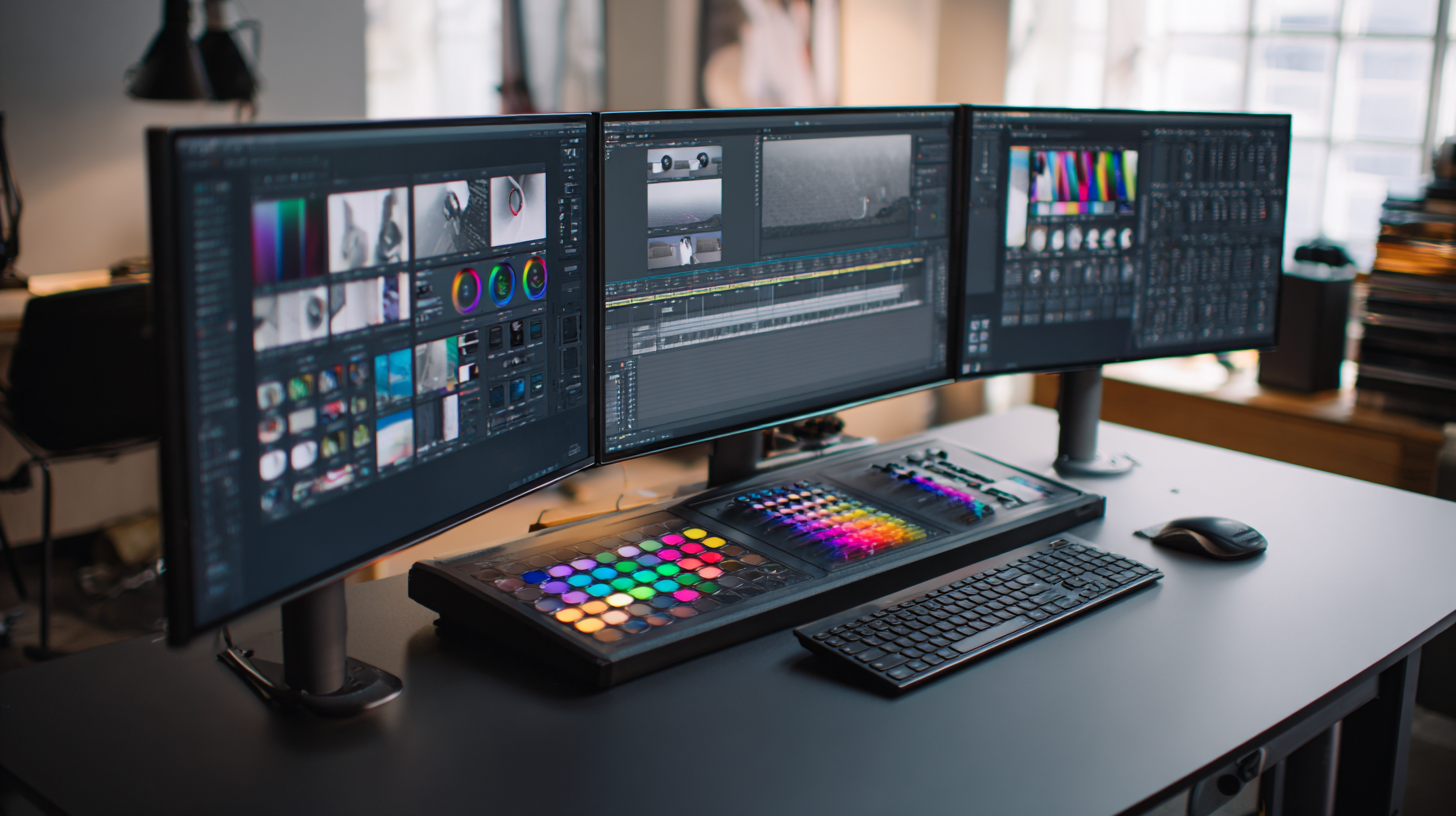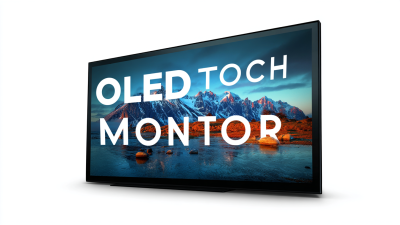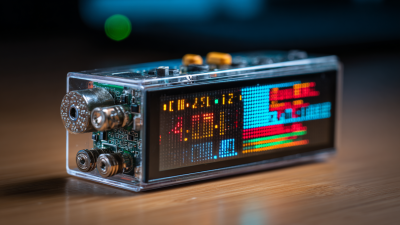In today's rapidly evolving digital workspace, selecting the right Oled Touch Monitor is crucial for enhancing productivity and user experience. According to recent market research, the global touch screen market is projected to reach $100 billion by 2025, with Oled technology leading the trend due to its superior color accuracy and thinner profiles. Furthermore, a study by IHS Markit revealed that Oled displays provide better energy efficiency, making them an attractive option for environmentally conscious businesses. As more organizations recognize the importance of intuitive interaction and high visual quality in their workspaces, understanding how to choose the appropriate Oled Touch Monitor tailored to specific needs has become imperative. This guide will explore essential factors to consider, ensuring you make an informed decision that optimizes both functionality and aesthetic appeal in your workplace.

When selecting an OLED touch monitor for your workspace, it is essential to first identify your specific requirements. According to a report by MarketsandMarkets, the global market for touch monitors is projected to reach $4.1 billion by 2025, driven by increased demand across various sectors, including education, retail, and healthcare. Understanding the primary tasks your monitor will be used for, such as graphic design, data analysis, or interactive displays, can help you determine the size and resolution needed. For instance, designers often require monitors with higher resolutions (4K or above) to accurately assess color and detail, making OLED technology particularly appealing for its superior color accuracy and contrast.
Additionally, consider the connectivity options and ergonomics of an OLED touch monitor. A research report by IDC highlights that over 70% of professionals prefer adjustable height and multi-angle tilting features for improved comfort and productivity. Features like multi-touch capabilities and responsive touch technology are critical for tasks that involve detailed interactions, such as CAD applications or medical imaging. By focusing on these workspace needs, you can choose an OLED touch monitor that not only enhances your workflow but also aligns with the evolving demands of modern professional environments.
When selecting the right OLED touch monitor for your workspace, evaluating the display size and resolution is crucial for achieving optimal viewing experiences. Research indicates that 27-inch monitors are among the most popular choices for professional environments, balancing screen real estate with desk space constraints. According to a 2022 report by IDC, larger display sizes, particularly above 27 inches, can enhance productivity by up to 20%, allowing users to manage multiple applications simultaneously without sacrificing clarity or comfort.
Resolution also plays a significant role in the effectiveness of an OLED touch monitor. Monitors with 4K resolution (3840 x 2160 pixels) are increasingly favored, delivering sharper images and finer details compared to standard HD displays. A study by DisplayMate revealed that users are 33% more efficient when working with 4K displays, as they reduce eye strain and improve readability. For professionals involved in graphic design or video editing, a high-resolution monitor not only enhances the quality of work but also minimizes the risk of errors caused by pixelation. Thus, evaluating both display size and resolution is essential in making an informed and effective choice for your workspace setup.

When selecting the right OLED touch monitor for your workspace, the touch technology and responsiveness features stand out as critical factors. Understanding the different touch technologies, such as capacitive and resistive, can help you make an informed choice. Capacitive touch screens, for instance, offer high sensitivity and support multi-touch gestures, making them ideal for creative tasks and software requiring intricate interactions. In contrast, resistive screens, while generally less responsive, can be beneficial in environments where durability and functionality with gloves are paramount.
Additionally, responsiveness plays a vital role in the overall user experience. Look for monitors with low latency and high refresh rates to ensure that every touch action is perfectly captured, providing a seamless interaction. Manufacturers often specify response times; thus, choosing a monitor with a response time of less than 5 milliseconds can significantly enhance productivity. By prioritizing touch technology and responsiveness, you can ensure that the OLED touch monitor not only meets your specific requirements but also enhances your workspace efficiency and creativity.
| Feature | Description | Importance |
|---|---|---|
| Touch Technology | Capacitive, Resistive, Optical, or Infrared | High |
| Responsiveness | Speed of touch detection and feedback | High |
| Screen Resolution | 1080p, 4K, etc. | Medium |
| Size | 23", 27", 32" or custom size | Medium |
| Color Accuracy | Percentage of sRGB, Adobe RGB coverage | High |
| Connectivity Options | HDMI, DisplayPort, USB-C, etc. | Medium |
| Ergonomics | Adjustability, VESA mount compatibility | High |
| Price Range | Budget, Mid-Range, High-End | Medium |
When choosing the right OLED touch monitor for your workspace, understanding connectivity options and ensuring compatibility with existing devices is crucial. Start by identifying the ports available on your current devices, such as HDMI, USB-C, DisplayPort, or legacy options like VGA. An OLED monitor with multiple connectivity options will not only enhance flexibility but also future-proof your setup.

When selecting an OLED touch monitor for your workspace, budget and warranty options play a pivotal role in ensuring a wise long-term investment. Initial costs can vary significantly, so it's crucial to establish a clear budget that aligns with your operational needs. Higher-end models may offer superior display quality and touch responsiveness, but they could also strain your finances. Assessing your specific requirements—whether for graphic design, general office work, or interactive presentations— will help you determine the features that are essential versus those that are optional.
Equally important is the warranty coverage that accompanies your OLED monitor. A robust warranty policy can safeguard your investment against unforeseen malfunctions or performance issues. Look for manufacturers that offer extended warranties or service plans, as these can provide peace of mind and potentially save you from costly repairs down the line. Additionally, researching customer reviews on reliability and support services will provide insight into how well the product stands up over time, further informing your decision as you look for the best balance between cost and protection.






